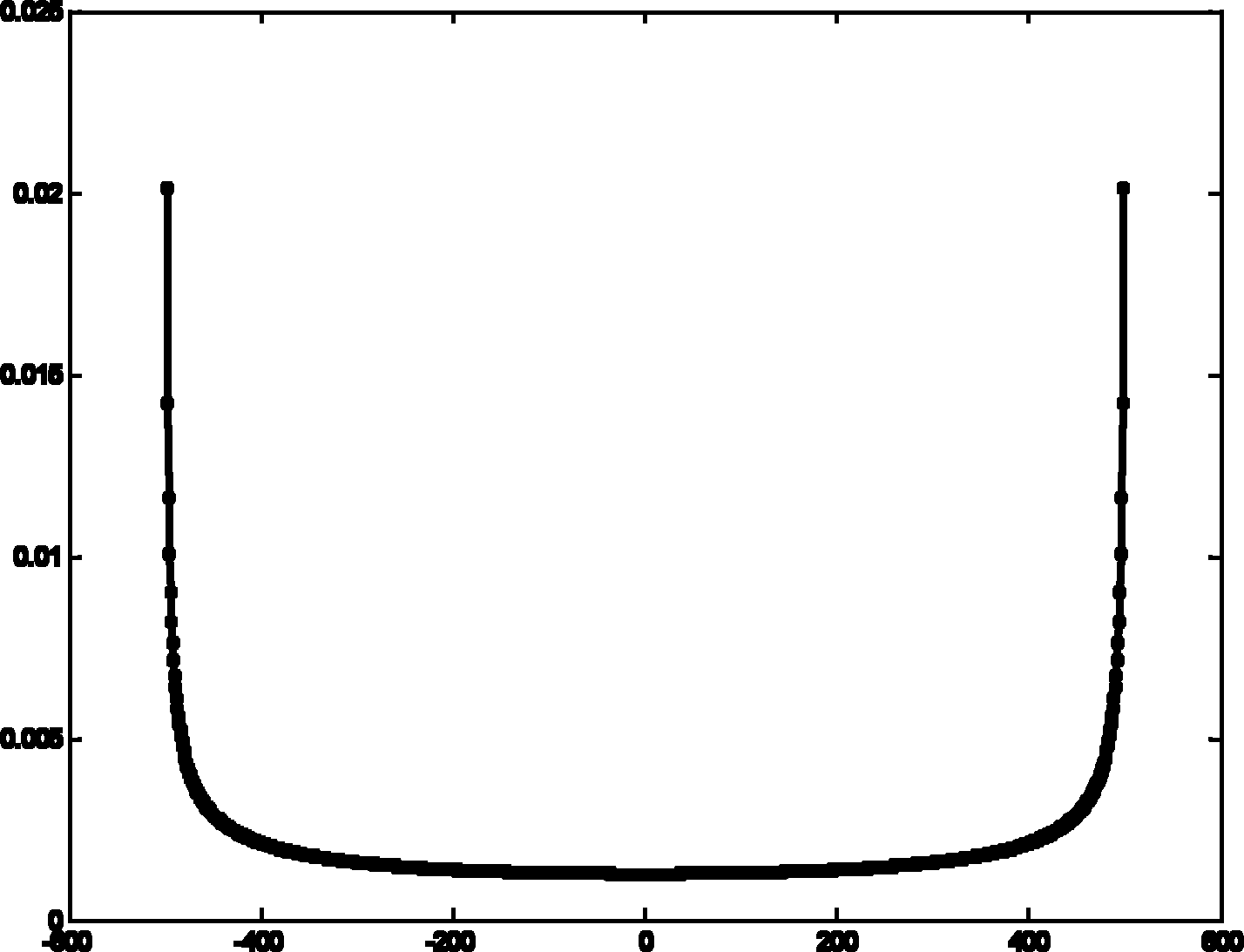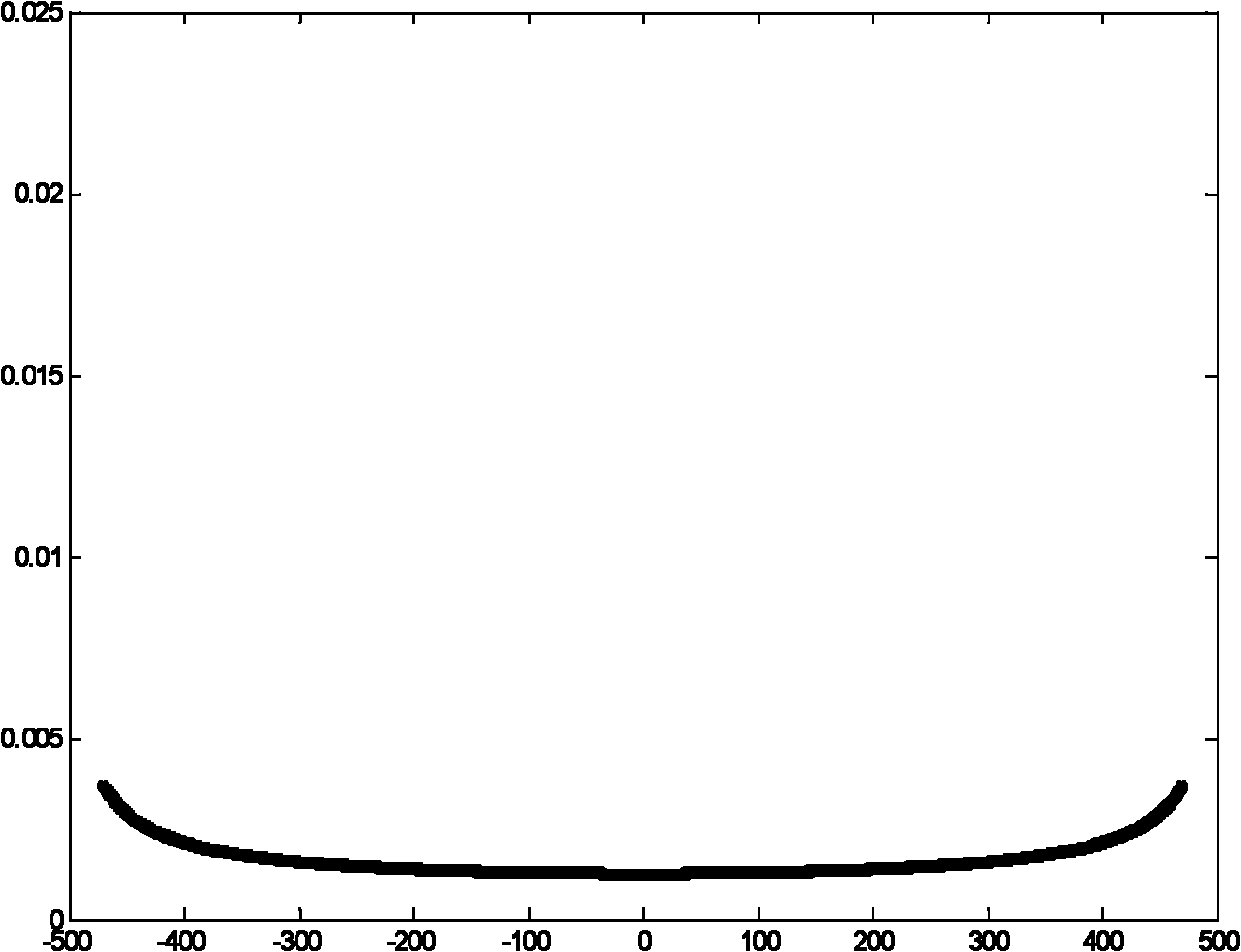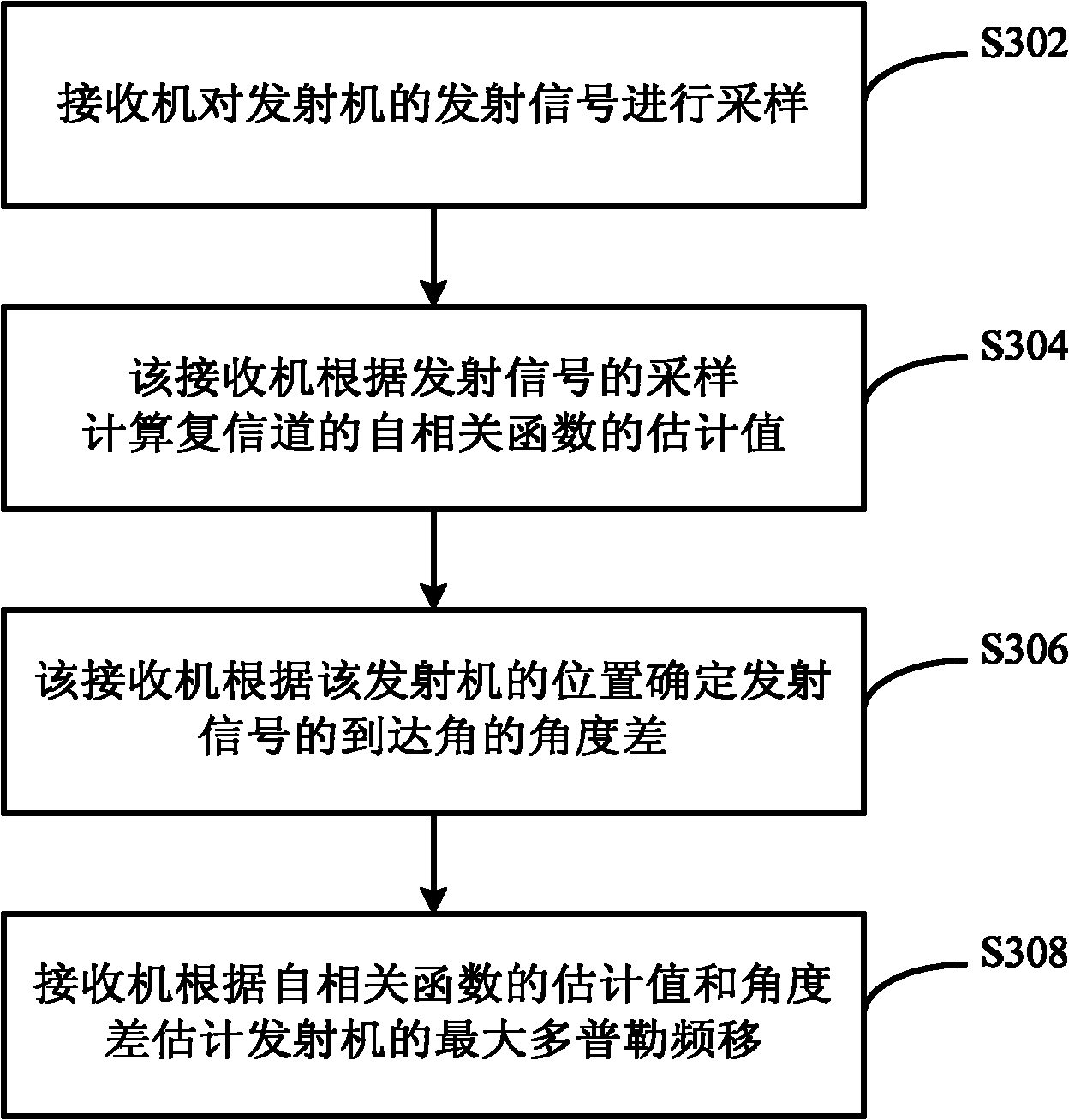Maximum Doppler frequency shift estimation method and device
A Doppler frequency shift and maximum technology, which is applied in the field of estimation method and device of maximum Doppler frequency shift, can solve the problem that the mobile speed of the terminal cannot be truly reflected, and achieve the effect of performance improvement
- Summary
- Abstract
- Description
- Claims
- Application Information
AI Technical Summary
Problems solved by technology
Method used
Image
Examples
Embodiment 1
[0041] image 3 A flowchart showing a method for estimating a maximum Doppler frequency shift according to an embodiment of the present invention, the method includes the following steps:
[0042] Step S302, the receiver samples the transmitted signal of the transmitter;
[0043] Step S304, the receiver calculates the estimated value of the autocorrelation function of the complex channel according to the sampling of the transmitted signal;
[0044] For example, to compute an estimate of the autocorrelation function of a complex channel
[0045] Among them, T S is the sampling period;
[0046] T=k·T s , k is a positive integer;
[0047] h() is the channel response function, h H () is the transposition of h();
[0048] n is the sampling moment, n=1, 2, ..., L-1, L is the number of sampling points;
[0049] m for is the time at 0 o'clock.
[0050] Step S306, the receiver determines the angular difference of the arrival angle of the transmitted signal according to the...
Embodiment 2
[0066] This embodiment takes Figure 4 The single-antenna system shown is taken as an example for illustration. The schematic diagram of the incident wave reaching the receiving end in this system is shown in Figure 4 As shown, among them, due to the lack of scatterers in this system, the multipath signal cannot reach the range of (-π, π) uniformly at the receiving end. At this time, the difference between the ideal channel autocorrelation function and the actual autocorrelation function is very large, so when using the autocorrelation function to estimate the maximum Doppler frequency shift, the actual autocorrelation function needs to be corrected.
[0067] First calculate the estimated value of the autocorrelation function of the complex channel from the received signal of the receiver: Wherein, the meaning of each parameter is the same as that of Embodiment 1, and will not be described in detail here. For example: T is the sampling point period T s Integer multiples o...
Embodiment 3
[0082] This embodiment takes Figure 5 The multi-antenna system shown is taken as an example to illustrate, and the schematic diagram of the incident wave reaching the receiving end is as follows Figure 5 As shown; In a multi-antenna system, when the relative movement direction of the transmitter and the receiver is the vertical direction, the relative movement cannot be measured. Such as Figure 5 As shown, where the incident wave arriving at antenna M is considered to be the transmitter moving vertically relative to the antenna, resulting in a Doppler of 0, and the incident wave arriving at antenna 1, the movement of the transmitter relative to the antenna is not between antenna 1 and transmitter In the vertical direction of the connection line, there is Doppler, so the maximum Doppler frequency shift can be measured through antenna 1.
[0083] In this embodiment, two antennas in the multi-antenna are used to estimate the maximum Doppler frequency shift corresponding to t...
PUM
 Login to View More
Login to View More Abstract
Description
Claims
Application Information
 Login to View More
Login to View More - R&D
- Intellectual Property
- Life Sciences
- Materials
- Tech Scout
- Unparalleled Data Quality
- Higher Quality Content
- 60% Fewer Hallucinations
Browse by: Latest US Patents, China's latest patents, Technical Efficacy Thesaurus, Application Domain, Technology Topic, Popular Technical Reports.
© 2025 PatSnap. All rights reserved.Legal|Privacy policy|Modern Slavery Act Transparency Statement|Sitemap|About US| Contact US: help@patsnap.com



